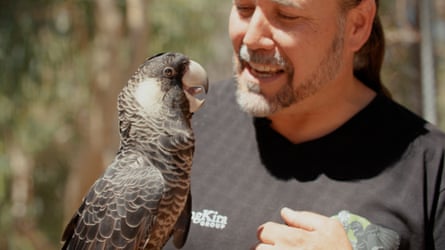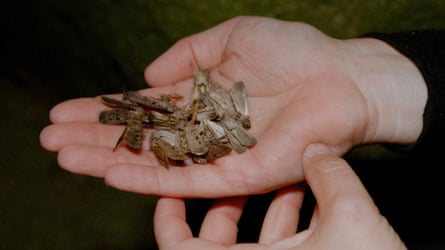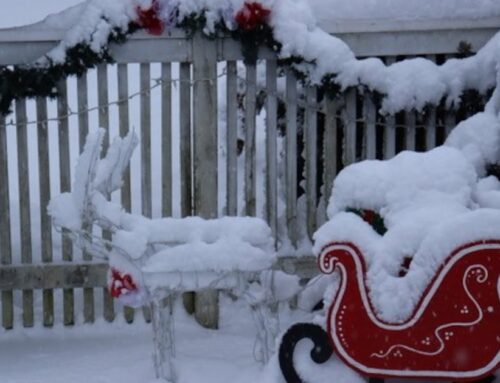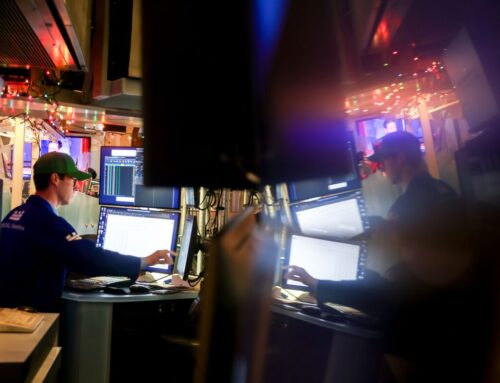Australia is in an extinction crisis – why isn’t it an issue at this election?
April 6, 2025
Most parliamentarians might be surprised to learn it, but Australians care about nature. Late last year, the not-for-profit Biodiversity Council commissioned a survey of 3,500 Australians – three times the size of the oft-cited Newspoll and representative of the entire population – to gauge what they thought about the environment. The results tell a striking story at odds with the prevailing political and media debate.
A vast majority of people – 96% – said more action was needed to look after Australia’s natural environment. Nearly two-thirds were between moderately and extremely concerned about the loss of plants and animals around where they live.
Unsurprisingly, the cost of living was way ahead when people were asked to nominate the issues they would like leaders to prioritise. But the environment was in a peloton of four issues vying for second place, alongside housing, healthcare and the economy.
On what they would like to see done, three-quarters of respondents said they would back stronger national nature laws, including the introduction of clear environment standards against which development proposals could be measured and potentially rejected.
Any survey should be treated cautiously, but the Biodiversity Council’s director, James Trezise, says it is not a one-off – the results are consistent with the findings of similar surveys in 2022 and 2023.
They are also clearly at odds with where Anthony Albanese ended this term of parliament, with Peter Dutton’s support. After bowing to an aggressive industry-led backlash in Western Australia to shelve a commitment to create a national Environment Protection Agency, the prime minister rushed through a law to protect Tasmanian salmon farming from an environmental review.
Longtime campaigners say it meant the term began with a government promising the environment would be “back on the priority list”, including a once-in-a-generation revamp of nature laws, but finished with existing legislation being weakened in a way that could yet have broader ramifications.
The message from peer-reviewed science is blunt: Australia is in an extinction crisis.
Over the past decade, more than 550 Australian species have been either newly recognised as at risk of extinction or moved a step closer to being erased from the planet.
The full list of threatened Australian animals, plants and ecological communities now has more than 2,200 entries. It includes some of the country’s most loved native species, including the koala, the Tasmanian devil, the northern hairy-nosed wombat and a range of the type of animals that Australians take for granted: parrots, cockatoos, finches, quolls, gliders, wallabies, frogs, snakes and fish. Scientists say that, unless something is done to improve their plight, many could become extinct this century.
Partly, this is linked to a global threat – what is described as the world’s sixth mass extinction, and the first driven by humans. But part of it is specifically Australian and avoidable.
A 2021 government state-of-the-environment report found the country’s environment was in poor and deteriorating health due to a list of pressures – habitat loss, invasive species, pollution and mining, and the climate crisis. Australia tops global rankings for mammal extinction – at least 33 species have died out since European invasion and colonisation – and is number two behind Indonesia for loss of biodiversity.
In recent weeks, the overriding question from scientists and conservationists who dedicate their lives to protecting the country’s unique wildlife has been: what will it take for national leaders to take the issue seriously? And will this campaign – and the next parliament – be a last chance to hope for something better?
“A lot of people in the scientific and conservation community have found the last three years exceptionally frustrating. A lot was promised, but in the end we went backwards,” Trezise says. “The survey shows there is a clear mismatch between what Australians expect the government to be doing and what it is actually doing. And it found there has been a decline in trust in politicians on the issue, particularly the major parties.”
Over the next week, Guardian Australia’s environment team will tell the stories of passionate people trying to circumvent this in their own quiet way by working to save threatened animals.
This work is most often done with little, if any, government support. One of the findings from the Biodiversity Council is the extent to which Australians overestimate the federal government’s commitment to biodiversity. Most guess that about 1% of the budget is dedicated to nature programs, a proportion that the Greens have said they would argue for from the crossbench, and that would translate to about $7.8bn a year.
Trezise says that, while funding for nature has increased since Labor was elected in 2022, the reality is that in last month’s budget, on-ground biodiversity programs received just 0.06% of spending – or just six cents for every $100 committed.
Lesley Hughes, professor emerita at Macquarie University and a senior figure in environmental science as a member of the Wentworth Group of Concerned Scientists and the Biodiversity Council, says it is a “deeply depressing” figure given most people would think even 1% was a “pathetically small amount” to save species from extinction and preserve places they care about. “I do think it shows politicians totally underestimate how much people care about nature,” she says.
She says it is tied to a broader lack of understanding that a healthy biosphere is “our life support system”. “We should treat it as a precious heritage item that is irreplaceable, and we need to see ourselves as part of nature. We are just another species,” she says. “OK, we’re a clever, resilient and adaptable species, but we’ve destroyed so much because we haven’t seen ourselves as being dependent and a part of it.”
The failure to directly address entrenched issues in environmental protection is not new. The singer and activist Peter Garrett had first-hand experience of how nature is considered in government decision-making, having served as Labor environment minister between 2007 and 2010. Garrett blocked development proposals more than other environment ministers, but says nature protection was rarely seen as a first-order issue by leaders in government and bureaucracy. He has seen no substantial improvement since leaving parliament.
“That’s a tragedy, particularly given the policy commitments that the current government had when it came into power,” the former Midnight Oil singer says.
“The problem that we have is that, whether it’s at a federal or at a state level – and notwithstanding the best intentions and efforts of environment ministers and [non-government organisations] and scientists who advocate on behalf of nature – when it comes to the final decisions that are taken in the cabinet room by political leaders through the prism of economics, nature always comes last. There are exceptions to that, but very few.”

Garrett says addressing that requires a shift in thinking at the top of government, but also across the community. He agrees Australians love nature, but says it often becomes a lower-order issue at the ballot box. It means that while conservation gains are possible – for example, an expansion in protected areas and support for First Nations ranger programs under Labor in this term – they mostly happen in places that no one wants to exploit.
“It’s very difficult in this country to break the cognitive dissonance between us loving our wildlife and enjoying an incredible environment and actually putting resolute steps in place to make sure that it’s protected, even if that comes at a cost,” Garrett says.
Trezise says that is backed up by another finding from the survey – that while people care about nature and want more done to protect it, they have little real insight into how steep the decline has become, or what a biodiversity crisis actually means.
Part of what it means goes beyond what is captured by a threatened species list. It also refers to the loss of diversity within species and ecosystems, including local extinctions of once abundant creatures.
This has become a common story for many Australians who have watched the disappearance of wildlife from particular areas during their lifetimes. To give one example: Brendan Sydes, the national biodiversity policy adviser with the Australian Conservation Foundation, lives in central Victoria. Grey-crowned babblers, birds with a curved beak and distinctive cry that are found across tropical and subtropical areas, were common in nearby bush earlier this century, but in more recent years have vanished.
“For us there’s a sort of a continuing discussion of: have you heard these birds recently? And the answer is: maybe they’ve gone, maybe we’re not going to see them any more. And that’s the legacy of fragmentation of habitat and the vulnerability that results from that,” he says. “The same thing is happening with other once common species. And once something’s gone from the area, it’s likely gone forever.”
Sydes says it is easy to become immune to this sort of decline. “It’s become a sort of feature of Australian nature. We really need strong, dedicated action for it to start to turn around,” he says.
How to respond to this is a deeply challenging question. It could start with an end to the government greenlighting the clearing of forest and woodlands relied on by threatened species. The Australian Conservation Foundation found nearly 26,000 hectares – an area more than 90 times the size of the Sydney CBD – was approved for destruction last year. Under the existing laws, far more clearing than this happens without federal oversight.
The challenge is not only to stop the loss of habitat but to restore the environment in places it has been lost in 250 years of European-driven clearing. Experts say that becomes particularly important in an age of climate crisis, when species adapted to living at particular temperatures and with particular levels of rain are being driven from their longtime habitats as the local conditions change. Connecting fragmented forests and other parcels of nature will become increasingly important.

Laying over the top of this is the impact of invasive species that kill and diminish native species, but are now so pervasive that they have changed the landscape for ever. It means there is no going back to the environment of 1750. A question that the political debate over the environment has yet to fully grapple with is what success from here actually looks like.
The environment minister, Tanya Plibersek, raised the idea this term by promising a “nature positive” future, adopting a term that overseas has been defined as halting and reversing nature loss by 2030 measured against a 2020 baseline and achieving “full recovery” by 2050. It would require retaining existing natural ecosystems – both areas that are highly intact and remnant fragments – and starting immediate restoration work on damaged and lost nature areas.
But achieving that will demand significant funding – whether from public or private sources – in addition to tightening laws to prevent further destruction. Labor passed legislation to encourage private investment, but hasn’t explained how, or when, it will arrive in significant sums.
It is unclear if the “nature positive” tag will survive into the next term given it has been rejected by WA industry, among others. Albanese has again promised to fix the laws and introduce a different model of EPA to that promised this term, but given no details. Dutton says no one can say the existing environment protection system is inadequate and promises faster decisions to allow developments to go ahead.
In her darker moments, Hughes wonders if anything can change, but she says she remains an optimist. She sees signs of a resurgence in the idea that people need to connect with and value nature as important to the human race, and says it could make nature and species conversation become a higher priority. “Let’s hope that’s the case,” she says.
Garrett says the path ahead for people who want change needs to be “building community and organisational strengths”, and supporting activists prepared to put themselves on the frontline using nonviolent direct action against fossil fuel exploitation and environment destruction.
“It’s about a transformative ethic that lifts what we have and recognises what we have been able to secure jointly,” he says. “It gave us a great conservation estate – look at the world heritage areas, look at Kakadu – but those great gains are in danger.
“Are we going to see unfettered housing developments and oil and gas exploration basically take over every square metre of the continent that’s left for them to do it? Or are we going to draw a line in the sand? It’s time to draw that line.”
Search
RECENT PRESS RELEASES
Related Post




